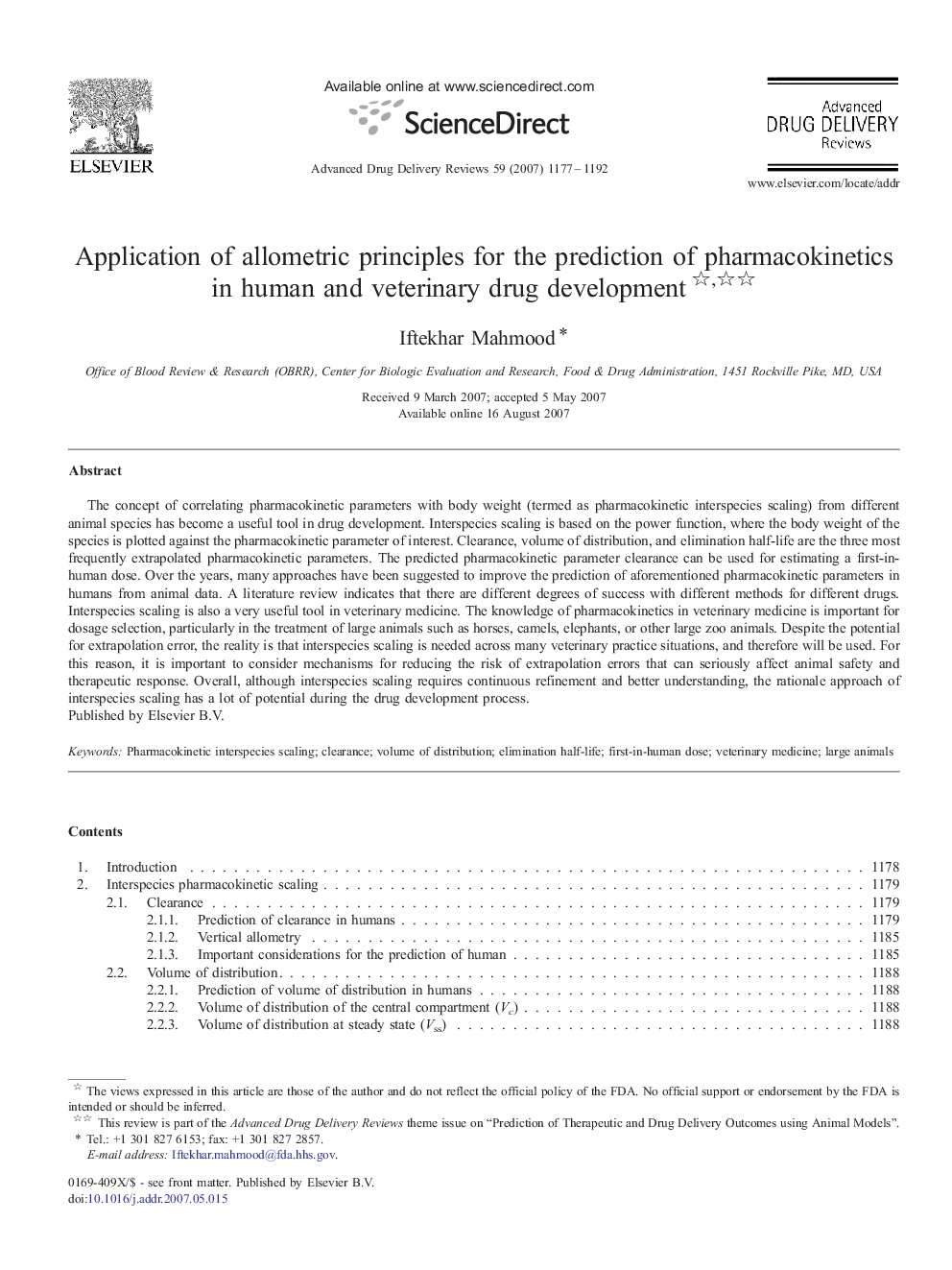| Article ID | Journal | Published Year | Pages | File Type |
|---|---|---|---|---|
| 2071789 | Advanced Drug Delivery Reviews | 2007 | 16 Pages |
The concept of correlating pharmacokinetic parameters with body weight (termed as pharmacokinetic interspecies scaling) from different animal species has become a useful tool in drug development. Interspecies scaling is based on the power function, where the body weight of the species is plotted against the pharmacokinetic parameter of interest. Clearance, volume of distribution, and elimination half-life are the three most frequently extrapolated pharmacokinetic parameters. The predicted pharmacokinetic parameter clearance can be used for estimating a first-in-human dose. Over the years, many approaches have been suggested to improve the prediction of aforementioned pharmacokinetic parameters in humans from animal data. A literature review indicates that there are different degrees of success with different methods for different drugs. Interspecies scaling is also a very useful tool in veterinary medicine. The knowledge of pharmacokinetics in veterinary medicine is important for dosage selection, particularly in the treatment of large animals such as horses, camels, elephants, or other large zoo animals. Despite the potential for extrapolation error, the reality is that interspecies scaling is needed across many veterinary practice situations, and therefore will be used. For this reason, it is important to consider mechanisms for reducing the risk of extrapolation errors that can seriously affect animal safety and therapeutic response. Overall, although interspecies scaling requires continuous refinement and better understanding, the rationale approach of interspecies scaling has a lot of potential during the drug development process.
